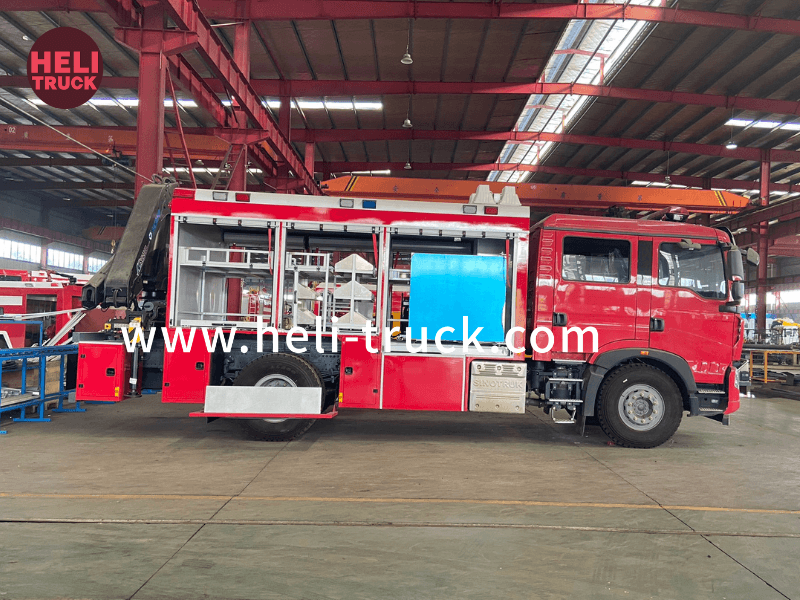Introduction
Garbage compactor trucks have become an essential part of waste management systems in cities around the world. These specialized vehicles play a crucial role in collecting, compacting, and transporting solid waste to disposal sites efficiently. Over the years, advancements in technology and design have led to the development of garbage compactor trucks with higher efficiency, improved performance, and reduced environmental impact. In this article, we will explore the evolution of garbage compactor trucks and how modern designs are maximizing efficiency in waste management processes.
Evolution of Garbage Compactor Trucks
Garbage compactor trucks, also known as refuse trucks or waste collection vehicles, have a long history dating back to the early 20th century. The earliest designs were simple open-bed trucks used for collecting and transporting waste from residential and commercial areas to disposal sites. These trucks required manual labor for loading and unloading waste, which was a time-consuming and labor-intensive process.
As urban populations grew and waste volumes increased, there was a need for more efficient waste collection and disposal methods. This led to the development of the first compacting garbage trucks in the 1930s, which featured hydraulic compactors that could compress the waste to maximize the truck's carrying capacity. This innovation significantly improved the efficiency of waste collection and transportation, reducing the number of trips required to empty bins and containers.
In the following decades, garbage compactor trucks continued to evolve with advancements in technology and engineering. Hydraulic systems became more sophisticated, allowing for faster and more powerful compaction of waste materials. The introduction of automated side-loading and rear-loading systems in the 1960s further increased the efficiency of waste collection operations by reducing the need for manual labor and improving the speed of collection.
Modern Garbage Compactor Trucks
Today, garbage compactor trucks come in various sizes and configurations to meet the specific needs of different waste management operations. From small rear-loading trucks used in residential areas to large front-loading trucks for commercial and industrial waste collection, modern garbage compactor trucks are designed for maximum efficiency and productivity.
One of the key features of modern garbage compactor trucks is their high compaction ratio. Advanced hydraulic systems and compacting mechanisms can compress waste materials efficiently, allowing the trucks to carry more waste per load. This not only reduces the number of trips required to empty bins and containers but also minimizes fuel consumption and emissions, making the trucks more environmentally friendly.
In addition to high compaction ratios, modern garbage compactor trucks are equipped with advanced safety and efficiency features. Automated lifting mechanisms and compaction controls help operators load and compact waste quickly and safely. GPS tracking systems and route optimization software allow waste management companies to plan collection routes more effectively, reducing travel time and fuel costs.
Furthermore, many modern garbage compactor trucks are equipped with onboard telematics systems that monitor key performance metrics such as compaction force, fuel consumption, and maintenance schedules. This data can be used to optimize truck operations, identify areas for improvement, and prevent breakdowns or malfunctions, ensuring maximum uptime and efficiency.
Environmental Impact and Sustainability
As concerns about environmental sustainability and resource conservation continue to grow, waste management companies are increasingly looking for ways to reduce the environmental impact of their operations. Modern garbage compactor trucks play a crucial role in this effort by improving efficiency, reducing fuel consumption, and minimizing emissions.
Highly efficient garbage compactor trucks with advanced compaction systems help reduce the volume of waste transported to disposal sites, which in turn reduces the number of trips required and the associated fuel consumption and emissions. By maximizing the carrying capacity of each load, these trucks can significantly reduce the carbon footprint of waste collection operations.
Furthermore, many modern garbage compactor trucks are designed with sustainability in mind. Manufacturers are using lightweight materials, aerodynamic designs, and energy-efficient components to reduce fuel consumption and emissions. Some trucks are equipped with hybrid or electric powertrains to further minimize environmental impact and promote cleaner, greener waste collection operations.
Future Trends and Innovations
Looking ahead, the future of garbage compactor trucks is likely to be shaped by advancements in technology, sustainability initiatives, and changing waste management practices. One emerging trend is the development of autonomous garbage compactor trucks that can operate without human intervention. These self-driving vehicles can improve operational efficiency, reduce labor costs, and enhance safety in waste collection operations.

Another trend is the integration of smart sensors and IoT (Internet of Things) technologies in garbage compactor trucks. These sensors can monitor waste levels in bins and containers, optimize collection routes in real-time, and provide data-driven insights to improve operational efficiency. By leveraging the power of data and analytics, waste management companies can make informed decisions to streamline their operations and reduce costs.
Moreover, there is a growing focus on circular economy principles in waste management, which aim to minimize waste generation, maximize resource recovery, and promote sustainable practices. Garbage compactor trucks will play a key role in this transition by facilitating the collection and transportation of recyclable materials, organic waste, and other valuable resources to recycling facilities and processing plants.
Conclusion
Garbage compactor trucks have come a long way since their humble beginnings, evolving into highly efficient and technologically advanced vehicles that play a crucial role in modern waste management systems. With https://www.heli-truck.com/water-tank-truck/ in hydraulic systems, automation, telematics, and sustainability, these trucks are maximizing efficiency, reducing environmental impact, and improving overall performance in waste collection operations.
As we look to the future, garbage compactor trucks will continue to evolve with emerging technologies and changing industry trends. By embracing innovation, sustainability, and data-driven decision-making, waste management companies can optimize their operations, reduce costs, and contribute to a cleaner, greener future for generations to come.
